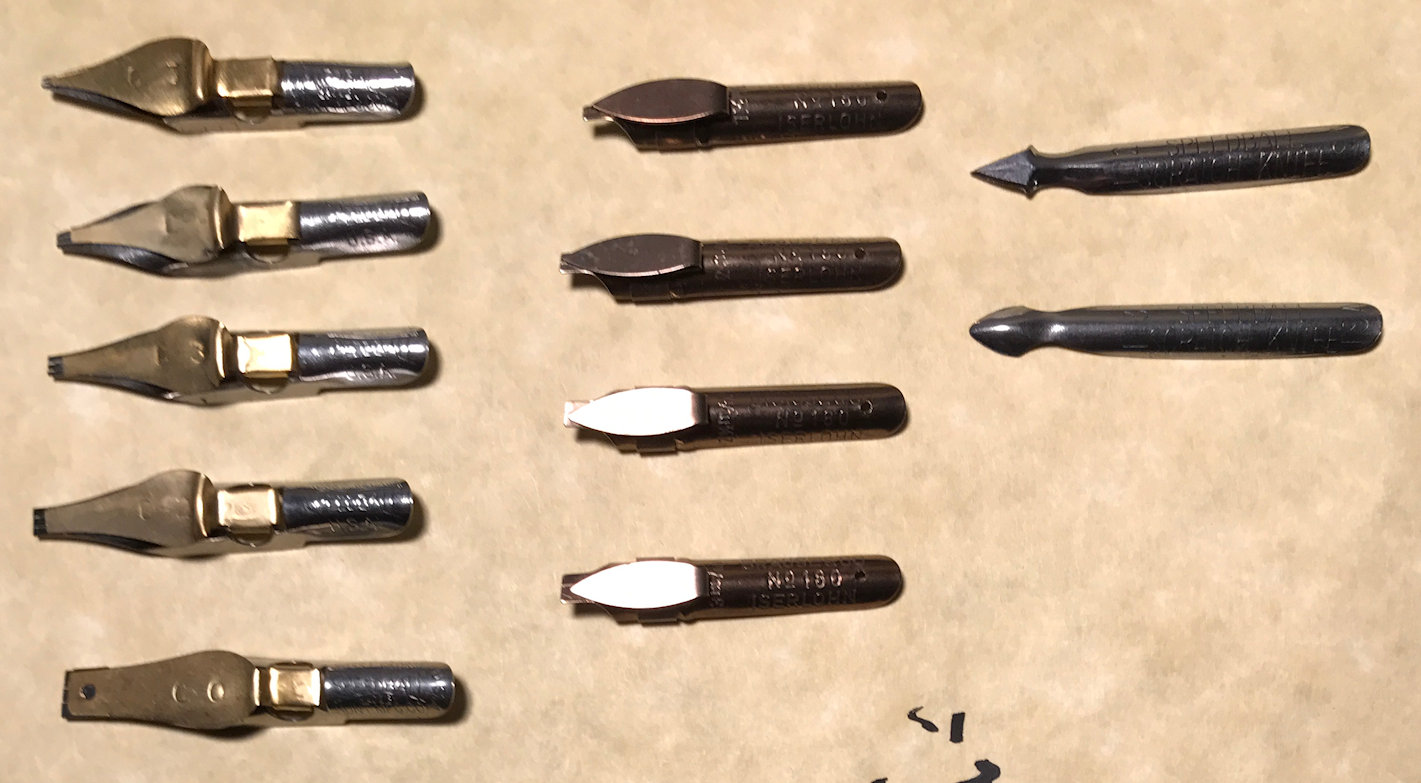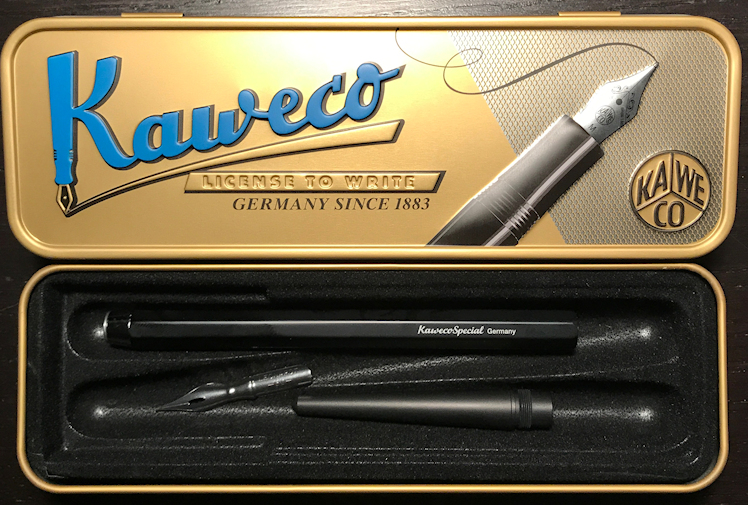Calligraphy Tools
See also: Calligraphy Books in the Bibliography.
Calligraphy Nibs:
Here are a variety of calligraphy pen nibs.
- The first column, with 5 nibs, are Speedball C-Type nibs shown from smallest 'C-5' to largest 'C-0'. C-1 is not shown.
- For my manuscripts, I mostly use the Speedball 'C-4' nib (2.0 mm), second from the top in the Speedball column.
- The second column, with 4 nibs, are Brause nibs; These nibs produce a nice line, but are difficult to use as they hold so little ink in their reservoirs and, as well, they fall apart easily.
- The third column shows a few 'scraper' nibs; I never use these.

Nib Holders (from top to bottom) :
- This octagonal shaped wooden nib holder, from Brause, is easy to hold due to its shape, but is also a bit too light.
- Standard plastic, round holder. Good ergonomics with the flare at the point where one holds the pen; increases control over pen angle.
- Standard wooden, round holder. OK, but lacks the control afforded by the round-flared holder above, also very light.
- Cork and plastic, round holder. Poor ergonomics for calligraphy due to the oddly shaped cork grip area; difficult to maintain proper angle.
- Aluminum, octagonal holder from Kaweco. This is my favorite; it has the ergonomic control of the octagonal Brause nib holder at the top, but also has some weight to it. Quite a bit more expensive than its couterparts above, but well worth the cost.


Calligraphy Markers:
Calligraphy markers are a good alternative for beginners, or where time is a factor. Not having to dip the pen every 7 or 8 letters can save a lot of time, not to mention hand strain. Let's go over these from top to bottom as well:
- Top (Black pen): Itoya 'CL-10' 2.0 mm Calligraphy marker; Acid-free ink, but not waterproof
- Middle (Brown pen): Pigma Graphic 2, 2.0 mm chisel-tip marker; Archival quality, water-proof ink. Though this marker states it's 2.0mm, it produces a thicker line than the others, which are also 2.0mm.
- Bottom (Blue pen): Staedtler 'Calligraph duo 3002' produces a nice 2.0mm line that is heavy and solid; Water-proof, lightfast ink. These are great markers; they come in 5-packs with red, blue, green, purple, and black. I have about 15 packs of these. They are great for practice, drafts, and even final works.

Leaf Preparation, Error Correction, & Finishing:
Mechanical pencils, erasers, and Exacto knives are essential tools as well. Correcting errors can be difficult, and one must decide, based on progress through a leaf, if it makes better sense to start a fresh sheet, or try to repair the error.
- The pencil is used to create rule lines and margin borders, or to trace in a place-holder outline of a Rubricated initial. The small eraser is also useful for precision line erasures.
- The Exacto knife is the primary correction tool; it is the 'eraser.' The goal is to remove the ink layer from the writing support, the paper or other material, through very carfully scraping its surface to eradicate the ink. A high-zoom magnifying glass can help in this task. The biggest caveat is that if the support is scraped through, a new leaf must be started.
- The large eraser is used to cover a lot of ground quickly in removing the rule and margin lines from a finished work. Taking care to run across the ink as little as possible. While it will not erase the ink, it can fade it slightly...depending also upon the quality of ink, of course.
